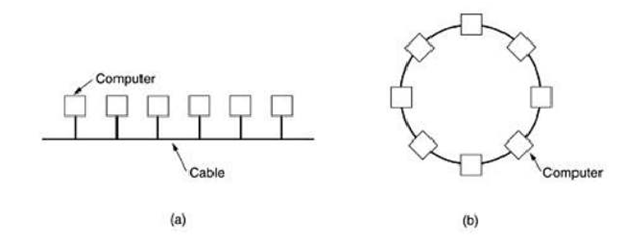Local area networks, commonly called LANs, are privately-owned networks within a single building or campus of up to a few kilometres in the size. They are broadly used to connect personal computers and workstations in company offices to share resources (e.g., printers) and exchange the required information. LANs are distinguished from other types of networks by the three basic characteristics:
(1) Their size of it,
(2) Their transmission technology used by it, and
(3) Its topology.
LANs are narrow in size, which means that the worst-case transmission time is bounded and known by us in advance. Knowing this bound makes it possible to use definite kinds of designs that would not be possible otherwise. It also simplifies the network management. LANs may use a transmission technology comprising of a cable to which all the machines are linked, like the telephone company party lines once used in rural areas. Traditional LANs run at an average speeds of 10 Mbps to 100 Mbps, have less delay (microseconds or nanoseconds), and make very less errors.

Newer LANs operate up to 10 Gbps various topologies are likely possible for the broadcast LANs. Figure1 gives two of them. In the bus (i.e., a linear cable) network, at any point at most one machine is the master and is allowed to transmit the information. All the other machines are needs to refrain from sending. An arbitration mechanism is needed to resolve conflicts when two or more machines want to transmit simultaneously. The arbitration mechanism may be centralized or distributed. IEEE 802.3, popularly called Ethernet, for example, is a bus-based broadcast network with decentralized control, usually operating at 10 Mbps to 10 Gbps. Computers on an Ethernet can transmit whenever they want to; if two or more packets collide, each computer just waits a random time and tries again later.
Another type of broadcast system is the ring. In the ring, each bit propagates around on its own, not waiting for the rest of the packet from where belongs. Characteristically, each bit circumnavigates the entire ring in the time it takes to send out a few bits, frequently before the complete packet has even been transmitted. As with all the other broadcast systems, some rule is required for the arbitrating simultaneous accesses to the ring. Many methods, such as having the machines take turns, are in use. IEEE 802.5 (the IBM token ring), is a ring-based LAN operating system at 4 and 16 Mbps. FDDI is one more example of a ring network.